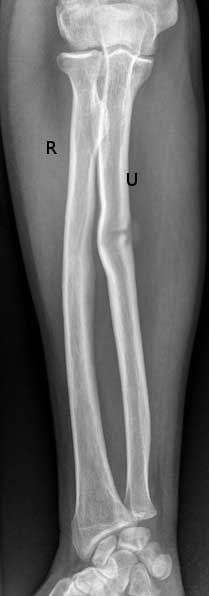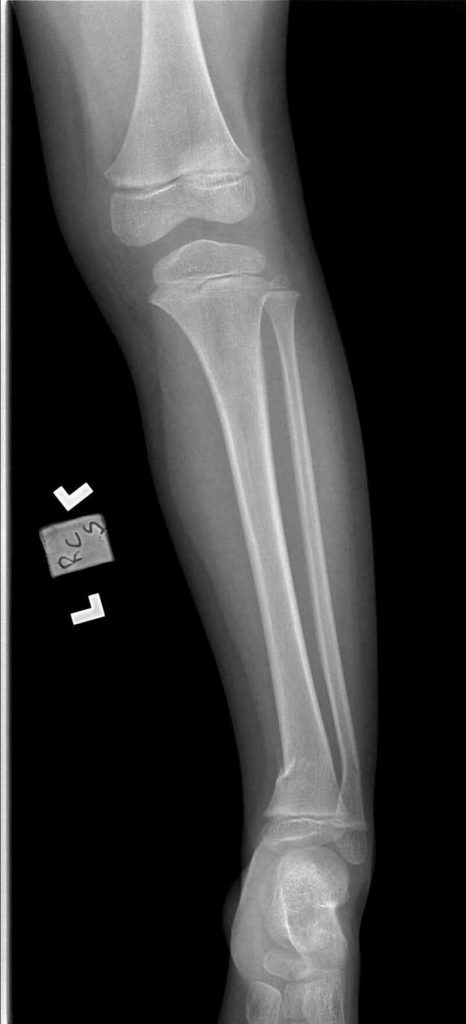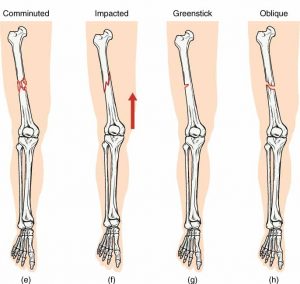Table of Contents
What is a Greenstick Fracture?
A Greenstick fracture is a fracture where the bone is bend and cracked but not separated. It’s quite similar when you try to break a green branch of a tree.
Greenstick fractures occur mostly in children below the age of 10.
Because at this age their bone has not completely ossified yet. So their bones are flexible and softer than the adults.
The treatment of this type of fracture is quite traditional. The fractured area must be immobilized. So that the broken pieces of bone can join together during the healing process. A cast is used to prevent mobility and re-occurring the fracture of the area if the child falls again.
Symptoms of Greenstick Fracture
Symptoms of greenstick fracture vary. It depends on the site, age, severity, sex, and some other factors. For the descriptive purpose, we’ll discuss it according to severity.
Mild Greenstick Fracture
- The site can be mistaken for bruises or sprains.
- Mild pain
- Difficulty in movement, especially while moving stuff.
Moderate Greenstick Fracture
- Severe pain
- Swelling in the fracture area
- Blacking discoloration of the skin
- Severe pain if while moving the arm
Severe Greenstick Fracture
- Deformity will be visible
- Severe pain
- Significant swelling of the area
- Cannot move the affected limb properly
Read Corn vs Wart
Causes
As you already know what is a greenstick fracture, it’s easy to understand why it occurs. When there is pressure from an end or both end of the bone. The bone cannot withstand that force and bends. The cracks usually occur on the convex portion of the bone.

The pressure/force is not enough powerful enough to break the bone into pieces.
So, according to the law of basic physics, the bone bends, and when the bending limit crosses it cracks.
The causes of these forces are;
- Fall on the concrete ground
- In physical sports
- Bicycle accident
- Fall from bench
- Fall from the swing
Diagnosis
There are few basic steps of diagnosis of a fracture or dislocation. A doctor follows these steps to find out greenstick fracture. As well as the doctor would suggest undergoing some tests for better diagnosis.
Physical Examination
The doctor will ask some questions about the accident or occurrence. He/she will examine the area of the fracture. The swelling, tenderness, color of the area, site of the fracture would help them to reach on final diagnosis.
Investigations
X-ray
- The plain radiograph usually mid-diaphyseal
- Usually occurs in tandem with the angulation of the bone
- Incomplete fracture
- The bone is curved

MRI & CT Scan
In case of greenstick fracture, it’s quite rare for a doctor to suggest MRI or CT scan. However, if the doctor is suspecting something dangerous or hidden injury he/she may suggest MRI and CT scan.

Differential Diagnosis
- Torus Fracture
- Saltar-Harris Fracture
- Toddler Fracture
- Spiral Fracture
- Non-accidental Fracture
- Open Fracture
- Plastic Deformities

Treatment of Greenstick Fracture
- The treatment of the greenstick fracture is traditional and easy. The doctor will immobilize the fracture site with a splint or cast.
- The cast is usually used for 4-6 weeks.
- If the fracture is distal then the doctor may use short casts. On the other hand, if the fracture is proximal then the doctor may need to use long-arm casting.
- For pain, the doctor may prescribe NSAID or acetaminophen.
- Some patient needs surgery when the fracture is quite severe or there are additional fractures or trauma. The surgeon may put a slender rod or metal plate with a screw surrounding the bone for maintaining alignment and proper healing. The slender rod or metal plate is usually removed by the surgeon after the healing period is over. But the surgeon may also want to keep these surrounding the bone if the condition is severe.
Healing Process of Greenstick Fracture
The prognosis of greenstick fracture is good. This usually healed within 4-8 weeks without any major complications.
However, this time could vary according to the medical condition of the patient.
During the healing process, the patient should visit the doctor often. If the immobilization is not properly working, or any other disturbance occurs. The patient should consult the doctor right away.
Complications
Greenstick fractures have a high risk of complication because of their instability. This should be immobilized as soon as possible. There is a tendency of refracture of the affected part among the children. So, it’s better to use casts as soon as possible.
After the healing period, there should be further analysis of the fracture if the end of the bone matches properly with the other bones to make joins.
The children should not attend any physical sports or activity during the healing period.
When To Seek Emergency Doctor
- If the splint or casts become loose or torn
- If there is a sign of infection
- Pus comes out
- The plaster or bandage becomes wet
- There is abnormal pain
- The finger becomes tender, shows swelling
Some other complications may arise during the fracture occurs;
Risk Factors
- Greenstick fracture is common among children below 10 years of age. Because their bones are soft and flexible.
- Children are prone to injury because they are not sensible about their movement and surroundings.
- Children who ride a bicycle
- Children who attend physical sports frequently
Prevention
- Don’t let your child play alone outside while you are not there.
- Give him/her proper safety equipment while riding a bicycle
- If the child is weak or thinner, he/she shouldn’t appear in physical sports.
- Use protective pads in the staircase and edges of the house.
Epidemiology of Greenstick Fracture
According to some sources, about 12% of patients of the pediatric department of the USA visit due to musculoskeletal injuries. Fractures are very frequent in these injuries.
Greenstick fracture is quite common in the age range of 5-10.
There is no gender distribution in this type of fracture. Both male and female kids are equally affected by this fracture.
Pathophysiology
Greenstick fracture is a partial thickness fracture. As it occurs in the long bones, it affects only a side of the bone.
In the fracture area, only the cortex and perineum of one side of the bone are interrupted. The other side remains normal.
The common bones where occurs greenstick fracture;
As people usually fall on their outstretched arms, this fracture is more frequent in the upper extremity.
It can occur in almost every bone of the body, but more frequent in the long bones.
Greenstick Fracture Summary
Greenstick fracture mostly occurs in children below the age of 10. This fracture is similar if we try to break the green branch of a tree. In this fractured bone bend and cracks but do not separate. This occurs mainly in children because their bones are soft and flexible.
Last Updated on February 23, 2022 by Learn From Doctor Team






